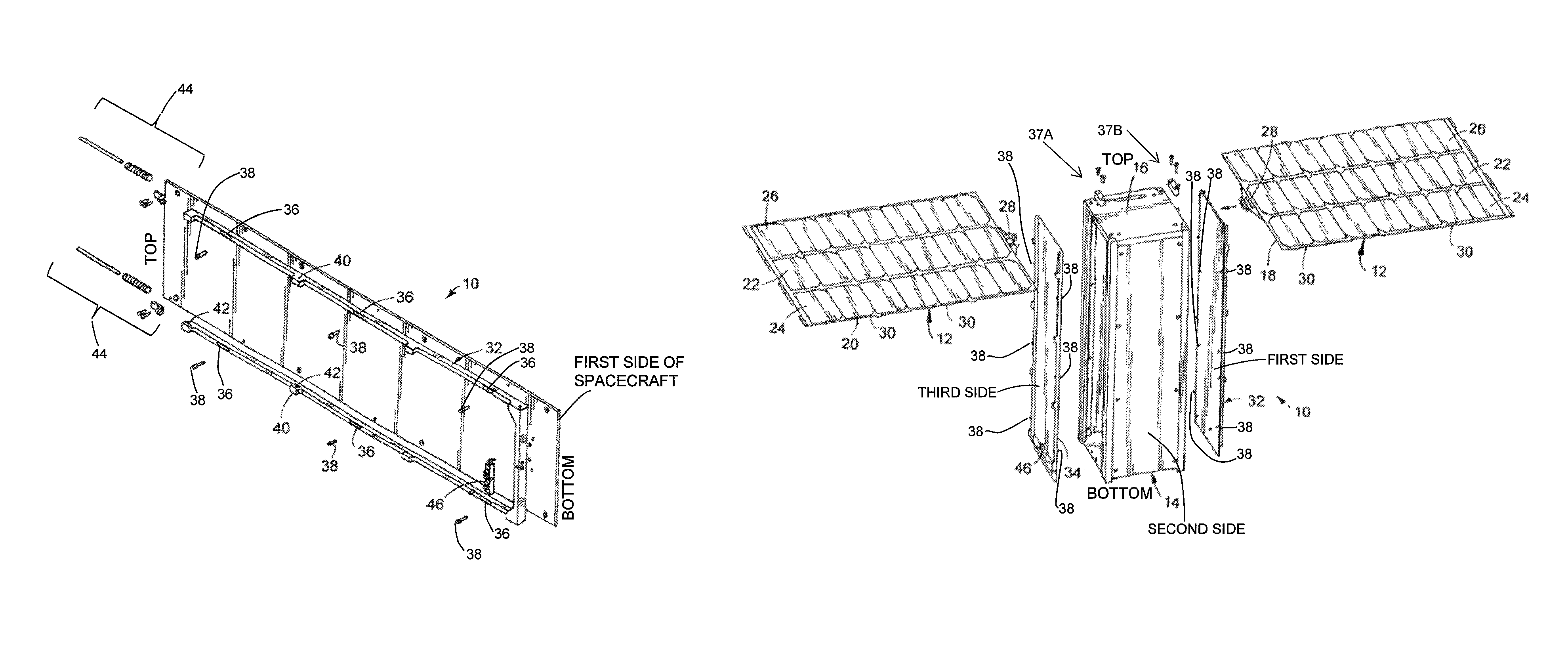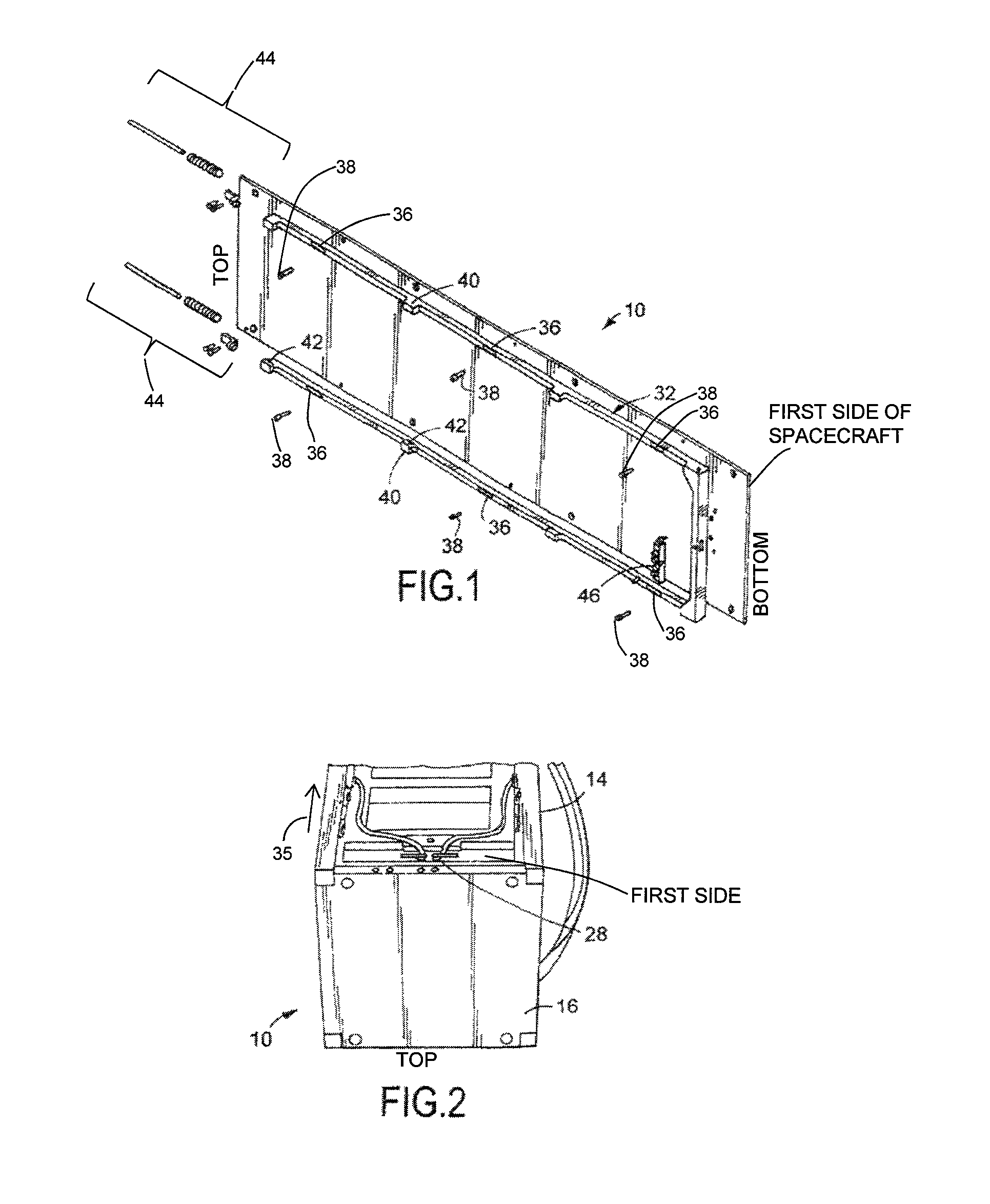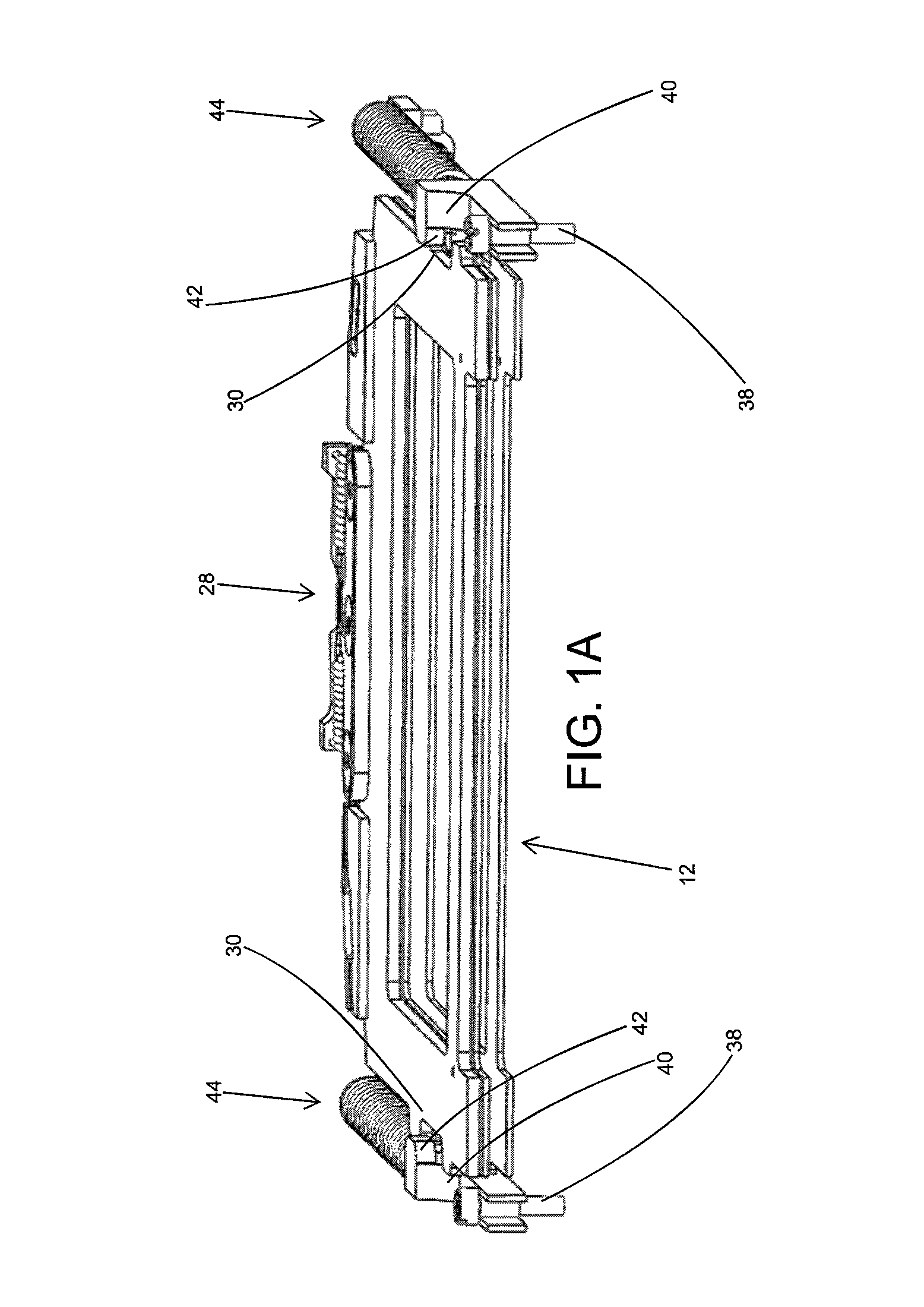Deployable and tracked solar array mechanism for nano-satellites
a solar array and nano-satellite technology, applied in the direction of transportation and packaging, cosmonautic vehicles, aircrafts, etc., can solve the problems of inability to “fix” any solar array panel or release mechanism, severely limited orbital average power (aop) and other problems
- Summary
- Abstract
- Description
- Claims
- Application Information
AI Technical Summary
Benefits of technology
Problems solved by technology
Method used
Image
Examples
Embodiment Construction
[0021]As illustrated in FIGS. 1, 1A, and 2-10, the present invention is a deployable and tracked solar array mechanism, indicated generally at 10, for restraining and releasing deployable solar panel arrays 12 on a spacecraft 14. The spacecraft 14 used with the mechanism 10 of the present invention is preferably a CubeSat spacecraft 14 although using the mechanism 10 on any type of spacecraft 14 is within the scope of the present invention. In addition, preferably, the solar panel arrays 12 are preferably constructed from a thin graphite-based composite panel stiffness and strength although using other types of solar panel arrays 12 is within the scope of the present invention.
[0022]The CubeSat spacecraft 14 has a four side surfaces, a top surface, and a bottom surface. Preferably, each side surface is substantially parallel to each opposite side surface and the top surface is substantially parallel to the bottom surface. Mounted on the top surface is a solar array drive assembly 16...
PUM
 Login to View More
Login to View More Abstract
Description
Claims
Application Information
 Login to View More
Login to View More - R&D
- Intellectual Property
- Life Sciences
- Materials
- Tech Scout
- Unparalleled Data Quality
- Higher Quality Content
- 60% Fewer Hallucinations
Browse by: Latest US Patents, China's latest patents, Technical Efficacy Thesaurus, Application Domain, Technology Topic, Popular Technical Reports.
© 2025 PatSnap. All rights reserved.Legal|Privacy policy|Modern Slavery Act Transparency Statement|Sitemap|About US| Contact US: help@patsnap.com



